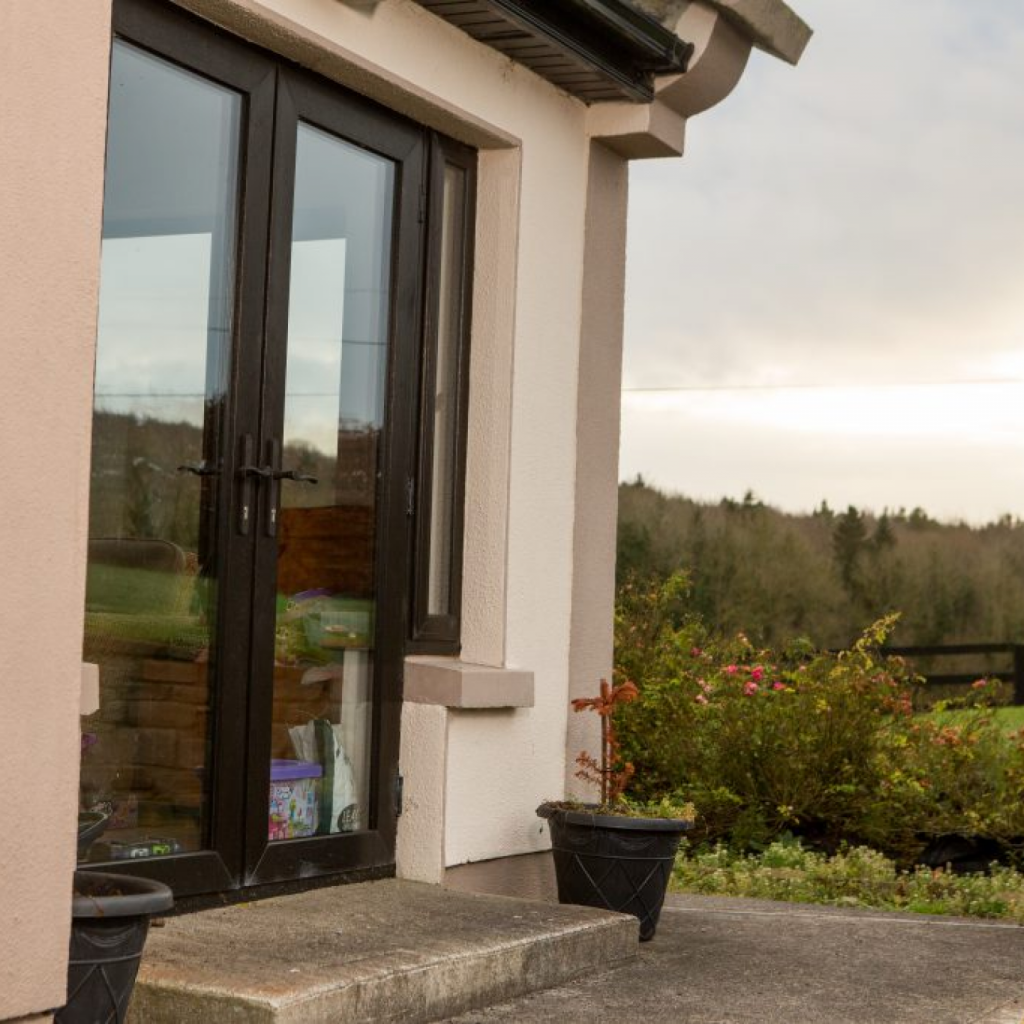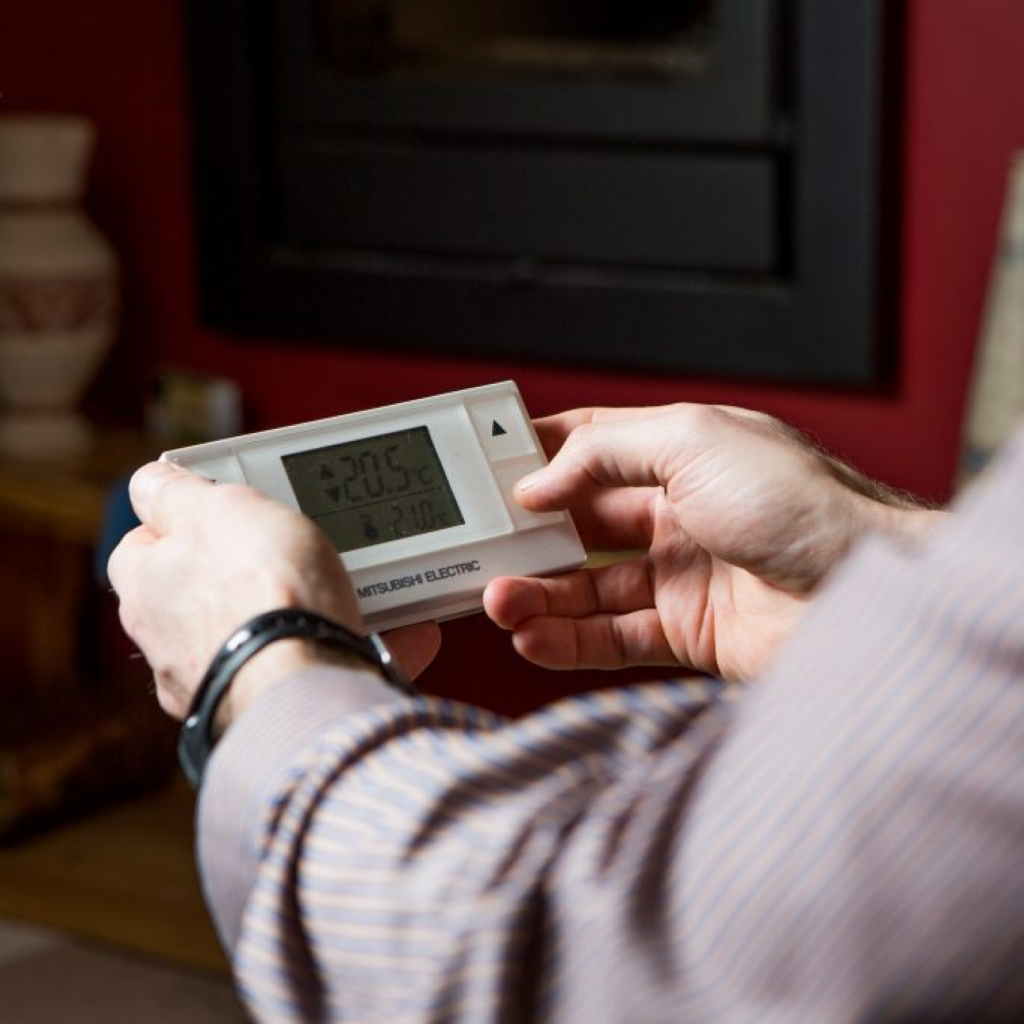The Story
Their second motivation for a home retrofit was environmental. “Every morning when I was looking out the window having my breakfast I saw a big dirty oil tank,” says Seamus. “It annoyed me every day since I bought the house.” The final motivation for doing further energy improvement works was to be as economical as possible.
The Measures
They completed a number of measures to bring the house up to near zero energy building (NZEB) standard:
- replacement of all windows and patio doors with triple-glazed units
- replacement of the back door
- retrofits to improve airtightness
- installation of demand controlled ventilation
- replacement of the oil-fired boiler with an air source heat pump

All the glazing in the house was replaced with triple-glazed PVC windows. The back door was replaced with the equivalent of a passive house door. “It was very poor and south-west facing so there was lots of air leakage and heat loss,” says Seamus.
“The back utility area used to be like an ice box. We were always screaming at the kids to close the door between it and the kitchen. Now it’s a perfectly comfortable space.”
Seamus had already tackled major draughts himself and had succeeded in getting the uncontrolled air changes down to 3.7 per hour, below the current building regulations for newly built houses. After the installation of new glazing and with careful sealing around windows and vents, air changes came down to 2.3 per hour. With such effective air-tightness, a ventilation system is necessary to make sure there is sufficient fresh air in the building.
An Aereco demand controlled ventilation system with fans that extract moist air was chosen. The internal and external vent covers in the existing standard ventilation holes in the bathrooms, toilet, kitchen and bedrooms, were replaced with the new extract fans. “By removing the moist air we are avoiding the build up of condensation and the potential for mould-growing conditions,” says Seamus. “The system extracts odours as well and we effectively don’t hear it working.”
The oil boiler and tank so disliked by Seamus were replaced with an air source 8.5kW Mitsubishi outdoor heat pump. A large proportion of the heat it generates is considered to be renewable energy.

“The physics of it is the same physics that works a fridge,” explains Seamus. “But with this we are taking the energy out of the air and putting it into the water that’s going through our radiators.” “When the contractors came to fit the heat pump they literally took the oil boiler out, put the heat pump in its place, and connected up.” The Hoynes didn’t have to change their radiators. “The only difference is that unlike the oil boiler which heated the water to 60 or 65 degrees the heat pump heats to 30 or 35 degrees but over a more consistent basis.”
The heat pump installation included a fully integrated heating controls upgrade including two thermostats in the living and bedroom areas which the Hoynes have set at 19.5 and 17.5 degrees respectively. “The heat pump tries to maintain the temperature in the house on a consistent basis, topping up a little bit all of the time. We don’t have the peaks and troughs of temperature that we had with our oil boiler system,” says Seamus.

A computerised monitoring system was also installed. It includes a Sontex heat meter, Elester water flow meters and cloud based database for control and monitoring of the heat pump either locally or remotely. Despite the computerized monitoring and data storage Seamus keeps a close eye on the system and his daughter Emer manually records the daily electricity and heat meter readings. Seamus estimates that the family are now spending 30% less on their fuel bills.
The Results
While Seamus’ considerable knowledge – he has many years professional experience in sustainable energy – helped reduce the conversations necessary between him, his wife Aileen and Electric Ireland Superhomes (then SuperHomes). The entire process took four months and the majority of the physical work on the ground was carried out within a fortnight. “The beauty of the system was that SuperHomes and the contractor were managing everything so the volume of paperwork and correspondence that we as homeowners had to deal with was very little,” says Seamus. “It was very user-friendly from our perspective. In terms of the ease of the process it was excellent.”
Overall both Seamus and Aileen are delighted. Their house is more comfortable in terms of heat and air quality and has an A3 energy rating. “All the draughts in the house have been eliminated, the kids are happier to use their bedrooms and we’ve been able to get rid of the oil tank and boiler,” says Seamus.

